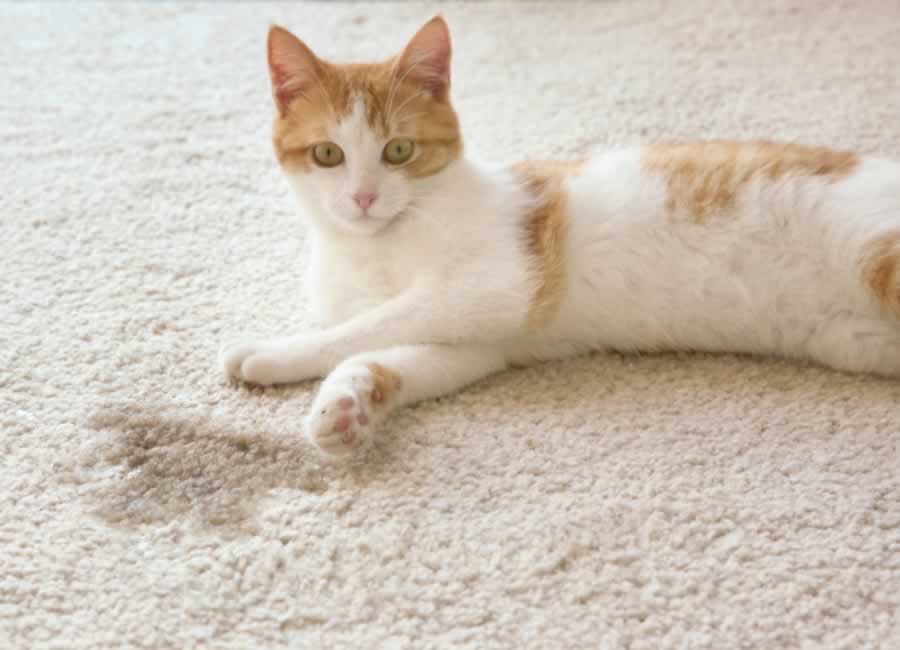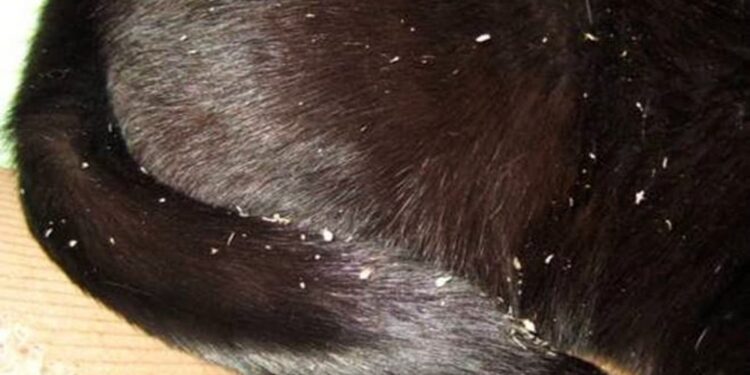Even the golden month of autumn cannot hide the fact that it is getting cooler. Every year at the beginning of the heating season, we discover white flakes in the fur of our tomcat Mowgli. Because dry heating air can lead to dandruff in cats. However, cat dandruff can also have other causes and even be a symptom of illness.
Normal flakes of skin
The cat’s skin works no differently than humans do. This protects the cat’s skin from environmental influences. As a result, it is constantly worn out and needs to be renewed. The skin cells pass through the different layers of the epidermis, die, and are ultimately shed on the surface of the skin as flakes of skin. However, these scales are so small that they cannot be seen with the naked eye if the process is normal. That means: Dandruff in cats is completely natural, but you normally don’t see them.
Dry skin from heating air

Heating air is not only comfortably warm, but it is also very dry. It is not uncommon for cats to react with dandruff. Because the dry air dries out the skin and flakes can form as a result. If the cat has dandruff, it doesn’t look much different from dandruff in humans: There are small, white, dead skin cells in the cat’s fur.
What Mowgli helps
Mowgli only has the white scales during the heating season. The following measures will help our hangover against his dandruff:
- Increase humidity: Humidifiers, water evaporators for the radiator, or bowls filled with water that is placed on the heater are ideal for this.
- Oil in the feed: A teaspoon of safflower oil or salmon oil in the feed once or twice a week works wonders for Mowgli.
Caution: Since dandruff in cats can also have more serious causes, it should be clarified with a veterinarian if in doubt.
Read More: Training cats: this is how it works with the tricks
Cat dandruff due to change of coat

Dandruff can also develop in cats when the coat changes. Because when it gets colder outside, the cat’s fur adapts to the changed weather conditions. The undercoat becomes thicker and the cat equips itself against the cold temperatures with winter fur. Grooming becomes even more important and regular combing stimulates blood circulation. After the coat change, the scales should go away on their own. If this is not the case, the cat should be presented to a veterinarian.
Dandruff from malnutrition
A cat can also react with dandruff if it is improperly fed. If there is a mineral deficiency, dandruff can be the result. This can happen, for example, if the cat is given supplementary food instead of full-fledged complete food for a longer period of time.
Dandruff in cats due to illness
If the cat has other symptoms related to the dandruff, illness could be the cause. As with us, the complexion provides information about the general condition. In the worst case, dandruff can be a side effect of diseases such as diabetes mellitus or kidney weakness, along with other symptoms . But a comparatively harmless parasite infestation can also be the cause of dandruff in cats . When in doubt, it is better to go to the vet once too much than too little.
Important note: The health information on https://revvet.de is intended for informational purposes only. They must not be used to independently make a diagnosis or start treatment. The published content does not constitute advice, nor a recommendation to buy or use drugs or other health products. Please always contact your veterinarian if your pet has any health problems!























